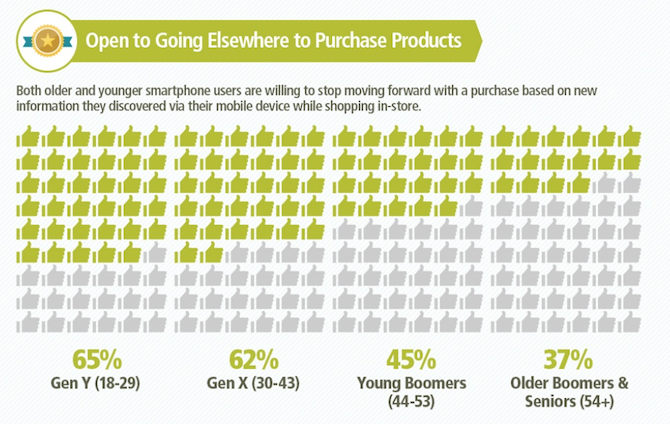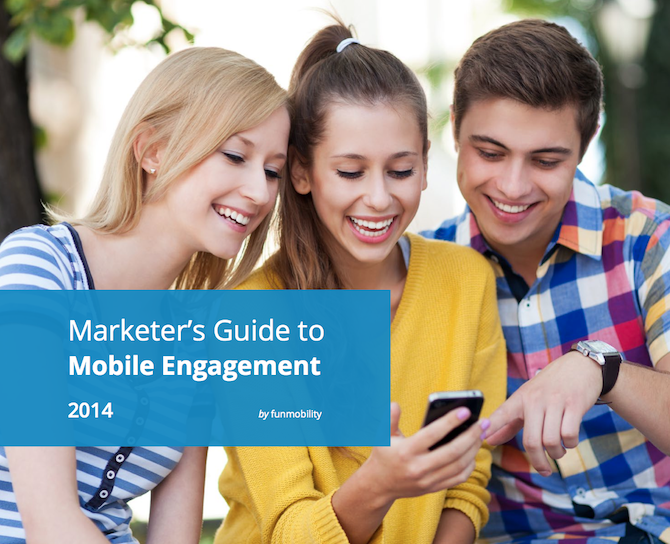I’ve said it before, and I’ll say it again: Mobile advertising is pretty darn amazing, and pretty darn underappreciated. Some critics try to give it flack because you can’t advertise on a mobile screen exactly the same way you might on a much larger desktop (though the average CTR for mobile is still more than twice that of desktop ads). But for those marketers and advertisers who make the effort to optimize their mobile ad in both design and execution, the potential is obvious (evidenced by the fact that annual mobile ad spend has seen triple digit increases every year for the past three years).
Consider, for example, that throughout all of human history there has never been another tool quite so adept at helping your message find the perfect audience. Seriously, compare mobile’s precision audience targeting capabilities with these other historical analogues:
-
Yelling from the top of a hill
A big sign nailed to a tree
Television infomercials
Messenger ravens
All have their strengths and weaknesses, sure, but in terms of sheer reach and versatility, none can compete with targeted mobile ads.
We’ve already covered the success that brands are seeing using geo-targeting to identify and connect with their perfect audience, but what about the people who are REALLY thinking outside the box? Remember, the more you can focus your advertising reach to target customers for whom your message is most relevant, the greater the return you will be getting from every individual impression or click-through.
Sometimes, all it takes is a little creativity. Here are five crazy-but-brilliant ways various brands are targeting their mobile audience:
1. Weather Targeting
Retailers and brands selling weather-sensitive merchandize can get a lot more mileage out of tailoring their geo-targeted ads based on climate. It’s safe to assume umbrellas, bikinis, snow tires, and ice-cold lemonades all probably see better conversions at different elevations.
But thanks to programmatic ad buying, some brands are now able to automate when and where their mobile ads appear, based on real-time data from weather apps. Umbrella brands are now able to selectively advertise only in areas where it is currently raining. Windbreaker ads can be served only when the wind kicks up. Ice cream brands can focus their reach to the hottest areas in a given hour.
2. Pollen Count Targeting
True, this only really applies if you’re advertising an allergy medication, but it’s so clever I just had to include it. Like with weather targeting, brands are now using a programmatic algorithm to automatically serve ads for allergy meds to the areas with the highest reported pollen count.
Again, this type of targeting may be limited to a specific vertical, but it still stands as a great example of how creative advertisers are using mobile to automate their response to supply-and-demand.
3. Geo-Conquesting
Geo-targeted mobile ads aren’t necessarily the most effective your brand is—sometimes you’re better off serving ads where your brand isn’t. One tactic that’s been steadily gaining popularity is Geo-Conquesting—geo-fencing around a competing location to lure away traffic. If you’ve got a particularly juicy promotion going on, geo-conquest can be a great way to acquire new customers who habitually shop somewhere else.
Consider this: A recent study from the Local Search Association reports that the vast majority of people use their mobile devices while shopping. It is therefore actually quite easy for brands to serve mobile ads to a customer while they are inside a competing store. What’s more, about half of all shoppers reported that they would be willing to stop moving forward with a purchase if they found a more attractive deal elsewhere:

Image courtesy of Local Search Association
Basic commodities businesses and restaurants–industries where the customer’s decision-making process is more prone to change on a whim–tend to see the best success with geo-conquesting. Brands advertising larger, lifestyle purchases don’t fare as well.
Chrysler recently reported poor results from their geo-conquesting campaign:
- “We’re not seeing a lot of success within competitors’ lots, but we are seeing success within our own lots,” said Amy Peet, Senior Digital Marketing Manager, Chrysler.
4. Recruitment Targeting
In a similar vein, many companies are using mobile audience targeting not just to find new customers, but also new talent. Recruiters are reporting tremendous success attracting high-quality applicants by geo-targeting mobile job ads around competing businesses.
5. Geo-Targeting Near Recently-Closed Stores
Brands are using mobile ads as a way of maintaining customer loyalty even after a local retail location shutters its doors. Fashion retailer Ashley Stewart recently closed several of its locations, and used mobile ads geo-targeted around the closed stores to retain customers.
- “We want to geofence customers who shop at those stores to get customers to shop at the nearest location, or to transfer onto the Web so that we don’t lose that customer,” said Larry Gray, CRM director at Ashley Stewart, Secaucus, NJ. “It helps us to reduce our churn and customers lapsing from the business and it gives us the opportunity to send new customers into the store that remains in the market.”
In addition to enabling customer retention should your brand close one of its own locations, geo-fencing can be used to drive customer acquisition in the event that a competing location closes its doors. Your competitor’s former customers will need to find an alternate local shopping solution, and targeted mobile ads can be used to drive brand awareness and lure them to one of your own locations—even providing automatic map directions.
To get a more complete picture regarding the full potential of mobile ads and mobile engagement, take a look at the Marketer’s Guide to Mobile Engagement 2014, available for free at FunMobility.com:


